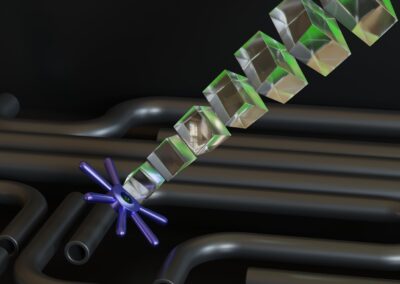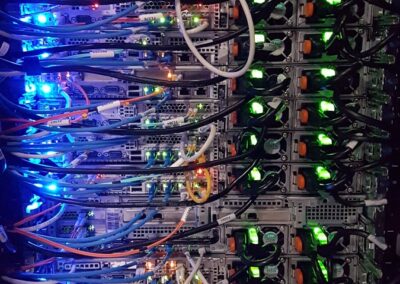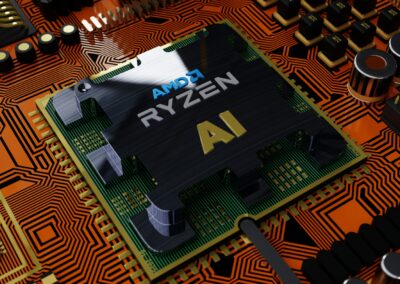Enhancing Scalability with Distributed IoT Architectures
Addressing Scalability Limitations in Traditional IoT Systems
The implementation of distributed architectures in IoT is revolutionizing how scalability challenges are addressed, particularly in technologically advanced regions like Saudi Arabia, the UAE, Riyadh, and Dubai. Traditional IoT systems often struggle with scalability due to centralized processing and data management, which can lead to bottlenecks as the number of connected devices grows. Distributed architectures mitigate these issues by decentralizing processing and data storage, allowing for more efficient and scalable IoT deployments.
In a traditional centralized IoT system, all data collected by sensors and devices is sent to a central server for processing and analysis. As the number of connected devices increases, the central server can become overwhelmed, resulting in slower response times and reduced system performance. This limitation is particularly problematic in large-scale IoT deployments, such as smart cities or industrial automation, where high volumes of data must be processed in real-time.
Distributed architectures address these limitations by distributing processing and data storage across multiple nodes. Each node in a distributed IoT system can process data locally, reducing the load on the central server and enabling the system to scale more effectively. For instance, in a smart city project in Dubai, edge computing nodes can process traffic data locally at each intersection, allowing for real-time traffic management without relying on a central server. This approach not only enhances scalability but also improves system reliability and resilience.
Improving Performance and Reducing Latency
Another significant benefit of distributed architectures in IoT is the improvement in system performance and reduction in latency. In centralized IoT systems, data must travel from the device to the central server and back, which can introduce significant delays, especially in geographically dispersed deployments. Distributed architectures, on the other hand, process data closer to the source, minimizing latency and enabling faster decision-making.
For example, in an industrial IoT deployment in Riyadh, distributed edge nodes can monitor and control machinery on the factory floor in real-time. By processing data locally, these nodes can detect anomalies and initiate corrective actions almost instantaneously, preventing potential failures and minimizing downtime. This capability is crucial for applications that require low-latency responses, such as autonomous vehicles, healthcare monitoring, and smart grid management.
Moreover, the ability to process data at the edge reduces the amount of data that needs to be transmitted to the central server, alleviating network congestion and further enhancing system performance. This is particularly important in scenarios where bandwidth is limited or expensive, such as remote or rural areas. By leveraging distributed architectures, IoT deployments can achieve higher performance and responsiveness, supporting a wider range of applications and use cases.
Driving Business Success with Distributed IoT Solutions
Enhancing Flexibility and Adaptability
The adoption of distributed architectures in IoT also enhances the flexibility and adaptability of IoT systems, enabling businesses to respond more effectively to changing requirements and conditions. Distributed architectures allow for the seamless integration of new devices and technologies, supporting incremental expansion and upgrades without significant reconfiguration or disruption.
In the dynamic business environments of Saudi Arabia and the UAE, where innovation and adaptability are key to success, distributed IoT solutions offer a strategic advantage. For instance, a logistics company in Riyadh can deploy distributed sensors across its supply chain to monitor the condition and location of goods in real-time. As new sensor technologies become available, the company can easily integrate them into its existing IoT infrastructure, enhancing its monitoring capabilities and operational efficiency.
Additionally, distributed architectures support a modular approach to IoT system design, allowing businesses to tailor their deployments to specific needs and applications. This modularity is particularly beneficial in sectors such as healthcare, agriculture, and energy, where diverse and evolving requirements must be met. By adopting a distributed architecture, organizations can build flexible and adaptable IoT systems that can evolve alongside their business needs.
Enhancing Security and Data Privacy
Security and data privacy are critical considerations in IoT deployments, and distributed architectures in IoT offer several advantages in this regard. Centralized systems can present attractive targets for cyberattacks, as compromising the central server can provide access to all connected devices and data. Distributed architectures, however, distribute data storage and processing across multiple nodes, reducing the attack surface and enhancing overall system security.
In addition, distributed architectures can implement security measures at multiple levels, providing robust protection against various threats. For example, edge nodes can encrypt data locally before transmitting it to the central server, ensuring that sensitive information is protected both in transit and at rest. This multi-layered security approach is particularly important in applications involving personal or confidential data, such as healthcare or financial services.
Furthermore, distributed architectures can enhance data privacy by enabling localized data processing and storage. In regions like Dubai and Riyadh, where data privacy regulations are becoming increasingly stringent, the ability to process data locally can help organizations comply with legal requirements and protect user privacy. By adopting distributed IoT solutions, businesses can enhance their security posture and build trust with their customers and stakeholders.
Conclusion
In conclusion, the implementation of distributed architectures in IoT offers significant benefits in terms of scalability, performance, flexibility, security, and data privacy. For businesses and cities in Saudi Arabia, the UAE, Riyadh, and Dubai, adopting distributed IoT solutions is essential for overcoming scalability limitations and driving long-term success. By leveraging the advantages of distributed architectures, organizations can build robust, adaptable, and secure IoT systems that support a wide range of applications and deliver valuable insights and capabilities. As IoT technology continues to evolve, distributed architectures will play a crucial role in enabling the next generation of smart and connected solutions, unlocking new opportunities for innovation and growth.
—
#DistributedIoTArchitectures #IoTScalability #SmartTechnology #BusinessInnovation #AdvancedIoTSystems #IoTDeploymentStrategies #SaudiArabia #UAE #Riyadh #Dubai


































